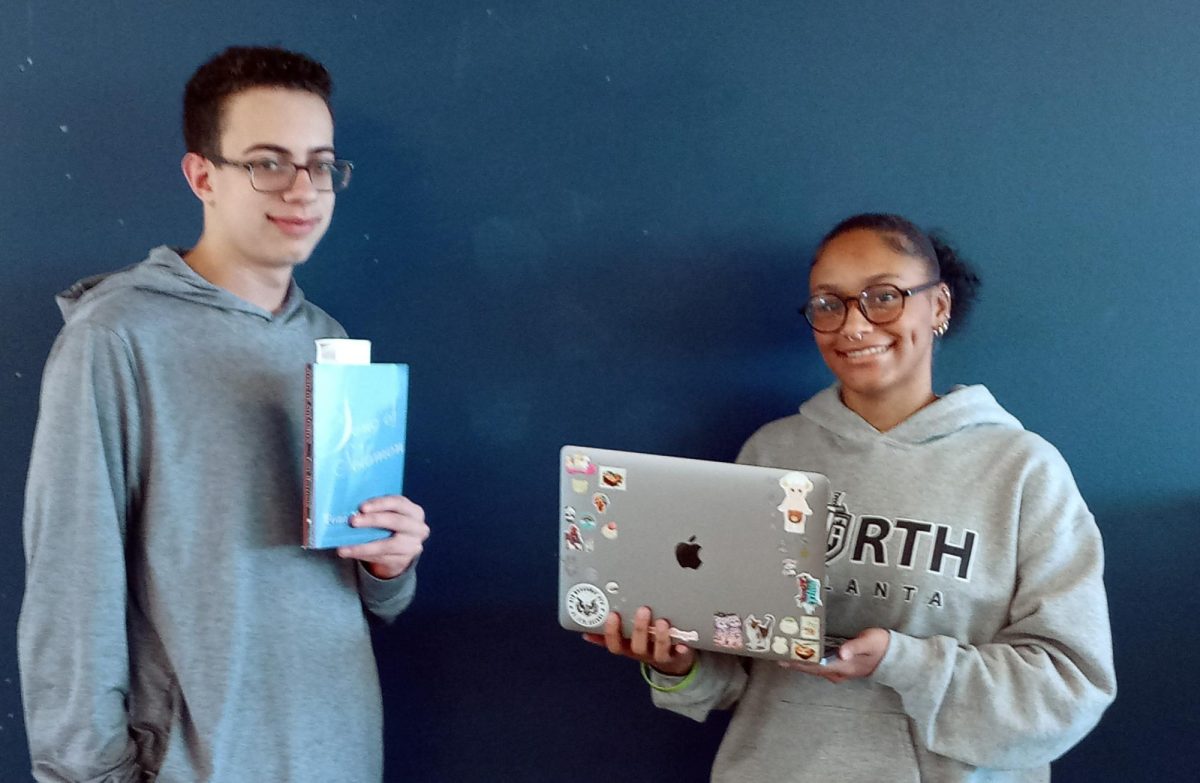They’re online, they’re many, they’re e-books! E-books have become a very popular outlet for readers in the past few years, but how much of a threat are they to traditional publishing? Sure they have many good qualities, but can it stand up to the giant that is the print industry? Both physical and e-books have certain special places in the world of reading when it comes to functionality, preference, and more. The various methods of reading are important for the future of not just the print industry, but libraries, bookstores, and online stores.
So why are e-books so popular in the first place? According to Chloe Veltman, an NPR’s Culture Desk correspondent, e-books save the trees, pulping, and shipping that goes into publishing, making them more environmentally friendly. However, Berners-Lee, the author of The Carbon Footprint of Everything, says that the average e-reader has a carbon footprint of about 80 pounds. That’s equivalent to around 36 small paperback books! Despite traditional publishing’s high carbon footprint, and its title as the world’s third-largest industrial greenhouse gas emitter, many traditional publishers are attempting to be more eco-friendly. This includes printing on-demand, using more climate-friendly fonts that cut down on ink and paper, and donating unsold copies.
Speaking of sold copies, according to Managed Outsource Solutions, e-books allow books to be sold in places where print books can’t and simplified the process for booksellers, increasing their sales and revenue. E-books have also greatly improved, as according to the Cork Eye Clinic, reader’s eyes cannot detect the movements of the new screens. However, both reading types can strain your eyes, and the Clinic recommends taking a break every 20 minutes. So, since both e-books and regular books have their pros and cons, e-books have yet to be a direct threat to traditional publishing.
But wait, there’s more! According to Parker and Peyton McFarlane of Hatteras, e-books have a number of disadvantages. You don’t get the feeling of flipping through pages or having a large collection of books important to the reader, eliminating more engagement. The blue light that e-books expose readers to can disrupt sleep patterns, circadian rhythms, and increase sleep disturbances and disorders. E-books also negatively affect libraries, as according to Elena Guitierrez of NPR, they often pay three to four times the regular print book amount, with e-audiobooks being even more expensive!
Many factors go into the role of e-books in the space of book publishing, and this role seems to have a lot of nuance. This role is also, while affecting the overall space, is down to the average reader and their specific preferences. If you love the feeling of reading books and want to support libraries, you probably read physical books. If you’re a bookseller wanting to sell more books, or are greatly opposed to environmental waste, then you probably prefer e-books. Everyone reads in their own way specific to them, and whether you read on a Kindle or on paper, neither is going anywhere any time soon.




















